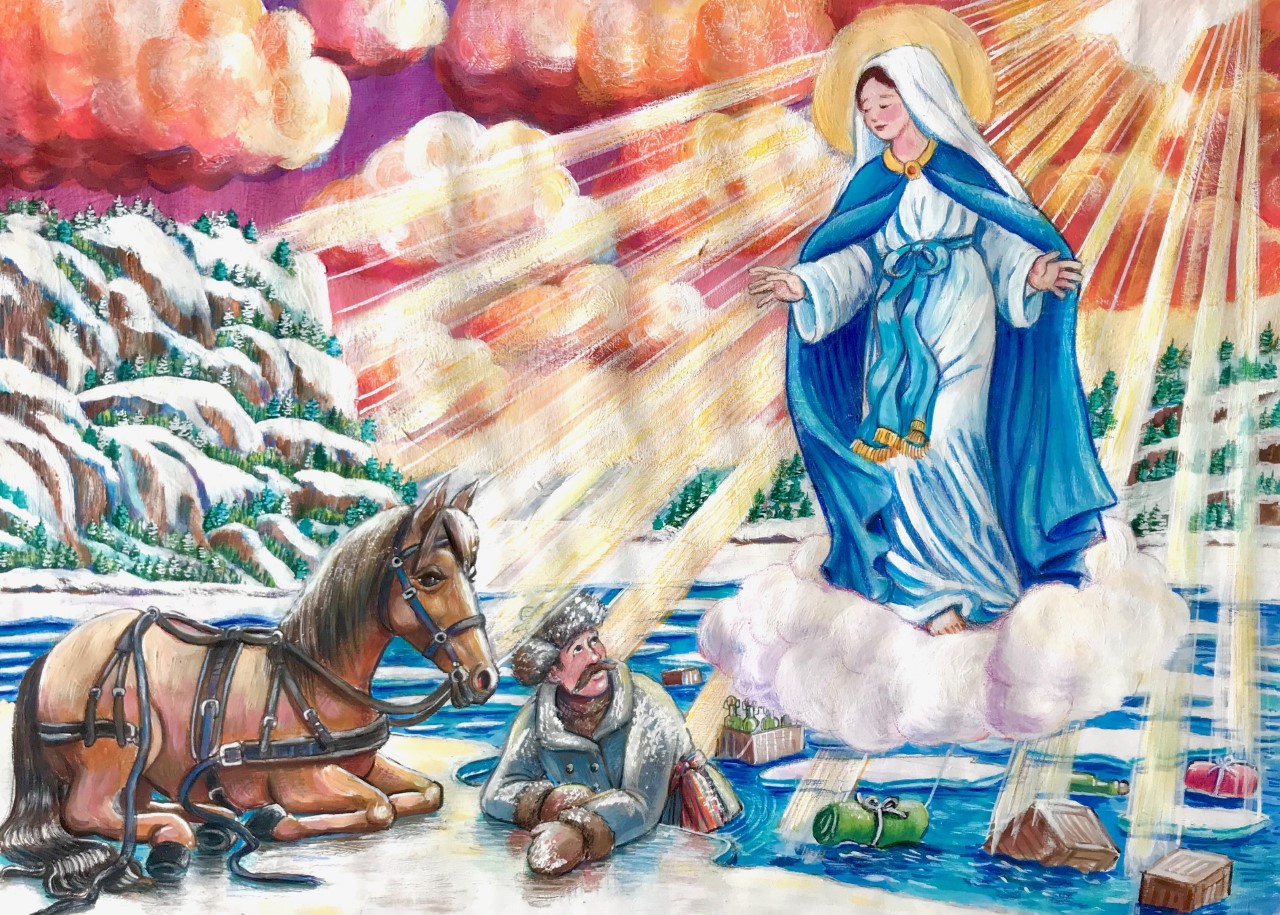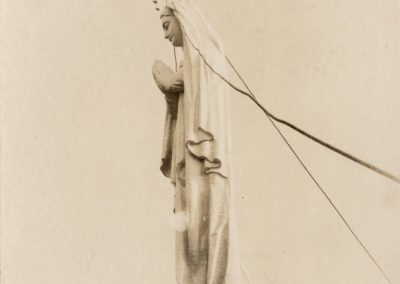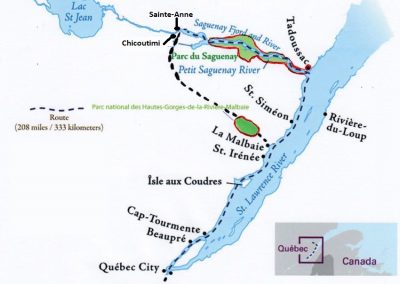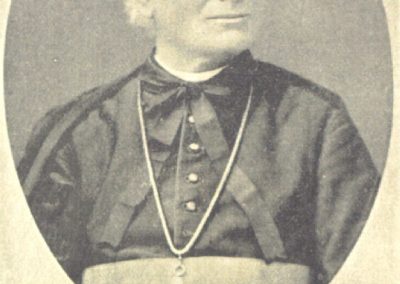The Madonna of Saguenay
Every winter, Charles-Napoléon Robitaille, a traveling salesman for P. Garneau & Frères of Quebec City, would take the road to the Saguenay with his fabrics, syrups, tools and everything else that could be indispensable to families living isolated along the fjord. The one familiarly referred to as the “peddler”, would then follow the winter road between Baie-St-Paul and Grande-Baie and then take the marked ice bridge in Chicoutimi to visit the families living in the Sainte-Anne parish, on the north shore of the river. This hazardous route allowed him to see death at close quarters.
We are in 1878 and Charles-Napoléon Robitaille slides slowly over the hardened surface of snow and ice. Direction Chicoutimi. As usual, he trusts his Canadian mare whose bells are tinted in the cold while he has taken refuge under skins and blankets, his feet flat on warm bricks. The course is not really dangerous, but sometimes the ice opens up with the tides, forcing constant vigilance. In an instant, the bells began to vibrate nervously and a great neigh was heard all the way to the shore before the icy waters engulfed the horse, the cart and the vendor.
Charles-Napoléon Robitaille only escaped by a miracle, even recovering his horse and cart. Without the promise made to the Virgin to honor him in an exceptional way if she saved him, the itinerant merchant would never have escaped from the icy waters and would certainly not have survived the consumption that nailed him to his bed and earned him the last sacraments.
Once recovered, Robitaille searched for what could be that “something important” he had promised Mary. Bishop Racine, Bishop of Chicoutimi, came to inspire him by proposing his own dream… a colossal statue on the gigantic Cap Trinité that so many tourists were already coming to admire on board cruise ships. In fact, Monsignor Racine did not hesitate to bring Charles-Napoléon Robitaille aboard one of the white boats of the Canada Steamship Line to show him the spectacular location he had in mind, which finally convinced the miraculous man.
A popular subscription helped to raise the funds and the promoter had to draw the sum of $1,750 from his own pockets to pay for the sculpture that had been commissioned from Louis Jobin de Portneuf. He too went to the foot of Cap Trinité aboard a cruise ship to assess the dimensions of his work and it was then that he decreed that it should be about 30 feet high. It would become the largest statue ever carved in North America, a title it apparently still holds.
It was during his blessing that Bishop Racine, at the end of a memorable oratorical flight, declared that all devotees who would come to recite three Aves at the foot of the Virgin would obtain 40 days of indulgences. From the moment the Virgin was enthroned on her pedestal, she changed her name a few times, becoming the Madonna of Saguenay, then Mary Immaculate, Our Lady of Cape Trinity and finally Our Lady of Saguenay. But, for many, she simply remains the Virgin.

Once recovered, Robitaille searched for what could be that “something important” he had promised Mary. Dominique Racine, first Bishop of Chicoutimi, came to inspire him by proposing his own dream… a colossal statue on the gigantic Cap Trinité that so many tourists were already coming to admire on board cruise ships. In fact, Bishop Racine did not hesitate to bring Charles-Napoléon Robitaille aboard one of the white boats of the Canada Steamship Line to show him the spectacular location he had in mind, which finally convinced the miraculously cured man.
A popular subscription helped to raise the funds and the promoter had to draw the sum of $1,750 from his own pockets to pay for the sculpture that had been commissioned from Louis Jobin de Portneuf. He too went to the foot of Cap Trinité aboard a cruise ship to assess the dimensions of his work and it was then that he decreed that it should be about 30 feet high. It would become the largest statue ever carved in North America, a title it apparently still holds.
It was during his blessing that Bishop Racine, at the end of a memorable oratorical flight, declared that all devotees who would come to recite three Aves at the foot of the Virgin would obtain 40 days of indulgences. From the moment the Virgin was enthroned on her pedestal, she changed her name a few times, becoming the Madonna of Saguenay, then Mary Immaculate, Our Lady of Cape Trinity and finally Our Lady of Saguenay. But, for many, she simply remains the Virgin.
THE MADONNA OF SAGUENAY STATUE IN BRIEF :
Height of the statue :
7,5 m without the base
9 m with base
Weight : 3 tons
Material: carved in three blocks of white pine and covered with thin sheets of lead
Inauguration: September 15, 1881
Altitude : 180 m
Sources:
http://www.histoiresoubliees.ca/article/la-grande-dame-du-saguenay




